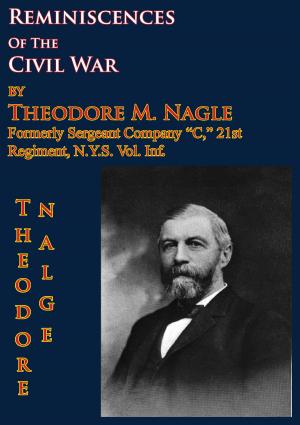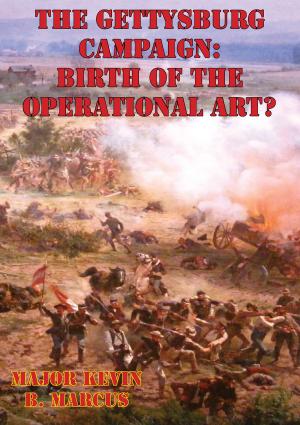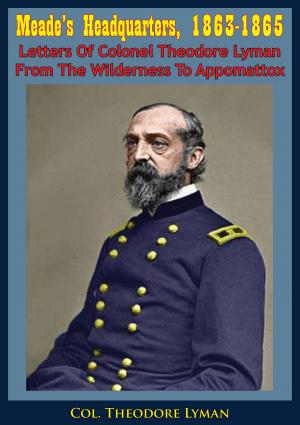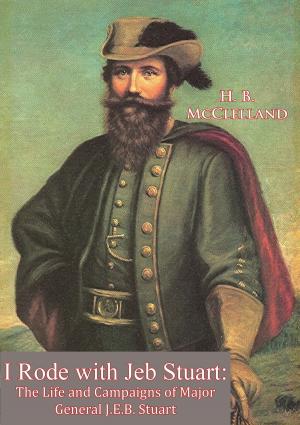The Vicksburg Campaign, November 1862-July 1863 [Illustrated Edition]
Nonfiction, History, Modern, 19th Century, Americas, United States, Civil War Period (1850-1877), Military| Author: | Dr. Christopher Gabel | ISBN: | 9781782899365 |
| Publisher: | Golden Springs Publishing | Publication: | November 6, 2015 |
| Imprint: | Golden Springs Publishing | Language: | English |
| Author: | Dr. Christopher Gabel |
| ISBN: | 9781782899365 |
| Publisher: | Golden Springs Publishing |
| Publication: | November 6, 2015 |
| Imprint: | Golden Springs Publishing |
| Language: | English |
[Includes over 12 illustrations and 2 maps]
The campaign for the control of Vicksburg was one of the most important contests in determining the outcome of the Civil War. As President Abraham Lincoln observed, “Vicksburg is the key. The war can never be brought to a close until that key is in our pocket.” The struggle for Vicksburg lasted more than a year, and when it was over, the outcome of the Civil War appeared more certain.
The centerpiece of the Vicksburg campaign was the Mississippi River, just as the great river is the centerpiece of the North American continent. The Mississippi and its tributaries drain over a million square miles of territory in the United States and Canada. These waterways included twenty thousand miles of navigable water, extending from Montana to Pennsylvania and from Minnesota to the Gulf of Mexico, making possible the large scale settlement of the west. Between 1810 and 1860, the number of whites residing west of the Appalachians swelled from one million to fifteen million, thanks in large part to the availability of navigable waterways. The black population, mostly slaves, grew from two hundred thousand to over two million, concentrated along the Mississippi. The rivers of the Mississippi basin provided an economic outlet for corn and hogs raised in Iowa and Ohio, as well as the sugar and cotton grown on the great plantations of Louisiana and Mississippi. By 1860, railroads were beginning to penetrate the region, but access to these western rivers remained vital to the economy of both the Midwest and the Deep South.
[Includes over 12 illustrations and 2 maps]
The campaign for the control of Vicksburg was one of the most important contests in determining the outcome of the Civil War. As President Abraham Lincoln observed, “Vicksburg is the key. The war can never be brought to a close until that key is in our pocket.” The struggle for Vicksburg lasted more than a year, and when it was over, the outcome of the Civil War appeared more certain.
The centerpiece of the Vicksburg campaign was the Mississippi River, just as the great river is the centerpiece of the North American continent. The Mississippi and its tributaries drain over a million square miles of territory in the United States and Canada. These waterways included twenty thousand miles of navigable water, extending from Montana to Pennsylvania and from Minnesota to the Gulf of Mexico, making possible the large scale settlement of the west. Between 1810 and 1860, the number of whites residing west of the Appalachians swelled from one million to fifteen million, thanks in large part to the availability of navigable waterways. The black population, mostly slaves, grew from two hundred thousand to over two million, concentrated along the Mississippi. The rivers of the Mississippi basin provided an economic outlet for corn and hogs raised in Iowa and Ohio, as well as the sugar and cotton grown on the great plantations of Louisiana and Mississippi. By 1860, railroads were beginning to penetrate the region, but access to these western rivers remained vital to the economy of both the Midwest and the Deep South.
![Cover of the book The Vicksburg Campaign, November 1862-July 1863 [Illustrated Edition] by Dr. Christopher Gabel, Golden Springs Publishing](https://www.kuoky.com/images/2015/november/500x500/9781782899365-GJ69_500x.jpg)






![Cover of the book Battles And Victories Of Allen Allensworth, A.M., Ph.D., Lieutenant-Colonel, Retired, U.S. Army [Illustrated Edition] by Dr. Christopher Gabel](https://www.kuoky.com/images/2014/june/300x300/9781782891222-UZeo_300x.jpg)

![Cover of the book Battle Of Ball’s Bluff, Staff Ride Guide [Illustrated Edition] by Dr. Christopher Gabel](https://www.kuoky.com/images/2014/august/300x300/9781782898610-9NBx_300x.jpg)



![Cover of the book Second Bull Run Staff Ride: Briefing Book [Illustrated Edition] by Dr. Christopher Gabel](https://www.kuoky.com/images/2014/august/300x300/9781782898597-unEf_300x.jpg)

